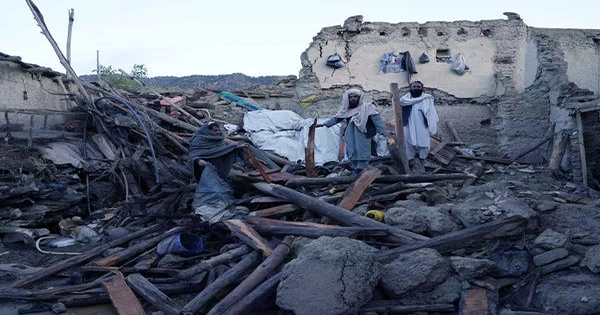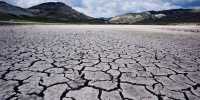According to the Afghan government-run Bakhtar News Agency, an earthquake that struck Afghanistan has caused at least 1,000 deaths and over 1,500 injuries. However, when more details about the devastated remote mountain villages from the natural catastrophe come to light, that number is only expected to increase. According to the US Geological Survey, the 5.9 magnitude earthquake struck early on June 21 just before 1:30 am local time (8:54 pm UTC) (USGS).
Its epicenter was around 10 kilometers (about 6 miles) below earth, 46 kilometers (28 miles) southwest of the Afghan city of Khst. It occurred in an area where earthquakes were also detected, not far from the western Pakistani border. Islamabad, the capital city of Pakistan, experienced considerable shaking, according to preliminary USGS data, although the extent of damage is expected to be minimal.
Because it lies on an active fault line between the Eurasia and India plates, this region of eastern Afghanistan, a mountainous region of the planet, is no stranger to earthquakes. According to the USGS, tectonic activity can happen because the India plate is slamming against the Eurasia plate as it steadily moves northward by a few millimeters per year.
The fatal magnitude 6.4 earthquake that struck western Pakistan in October 2008 and resulted in the destruction of numerous communities due to induced landslides killed 166 persons in total. This week’s earthquake followed that disaster. The USGS believes that there is now little risk of landslides in Afghanistan as a result of the recent earthquake, although more precise information is still being received.
The India plate is clashing with the Eurasia plate as it moves northward at a pace of roughly 40 mm per year (1.6 inches per year), causing earthquakes and active faults in eastern Afghanistan and western and northern Pakistan. The Himalayan, Karakoram, Pamir, and Hindu Kush ranges are among the tallest mountain peaks in the world, and they are all produced as a result of the India plate subducting beneath the Eurasia plate along the northern edge of the Indian subcontinent. Oblique motion between the two plates causes earthquakes that are caused by strike-slip, reverse-slip, and oblique-slip motion west and south of the Himalayan front.
The June 21, 2022 earthquake was primarily a strike-slip faulting event, either left-lateral slip on a northeast-striking fault or right-lateral slip on a northwest-striking fault, according to the pattern of elastic waves that were radiated by the event. The fatal magnitude 6.4 earthquake that struck western Pakistan on October 10, 2008, killing 166 people and causing several communities to be devastated by caused landslides, is around 500km (300 miles) north-northeast of the next earthquake on June 21, 2022.
















